The North Face Vault Backpack Review
The budget-focused The North Face Vault Backpack includes features like a comfy harness system and a dual-compartment layout at the cost of material quality.
Our Verdict
Save time. Get access to brief summaries of our reviews so you can browse and make decisions more efficiently.
Pros
- Budget-friendly with a fairly beefy and comfortable harness system
- Admin panel has substantial depth along with organization
- Front daisy-chain loops let you hang additional gear externally
Cons
- Bottle pockets lack enough elasticity to hold bottles in
- Zippers may gradually open when left slightly agape along top
- Overall low-grade build quality
Technical Details
-
Capacity
27l
-
Weight (lb)
1.6875 lb (0.8 kg)
-
Denier
600D
-
Dimensions
11 in x 8.5 in x 18 in (27.9 x 21.6 x 45.7 cm)
-
Notable Materials
Recycled Polyester, Woojin Hardware, DWR Coating, SBS Zippers
-
Manufacturing Country
Cambodia
-
Laptop Compartment Size
15"
-
Warranty Information
Full Review
Striking a balance between a backpack’s many design elements can be tricky, especially when targeting the budget market. There are many aspects to consider, like comfort, materials, layout, pockets, and aesthetics—and that’s not an exhaustive list by any means. We’ve seen how The North Face handles its approach to maximizing value, with backpacks like the Recon and the Jester offering competitive features at their respective price points.

Less expensive than both those bags is the Vault. At around $65 at the time of writing, it includes a lot of the familiar features we’ve come to expect from the brand. Most notable among them is the FlexVent suspension system, which features a well-padded back panel and comfortable shoulder straps. While this is a good feature to retain, the price necessitates the elimination of other features. The liner, for example, is either very thin or non-existent. That said, the key here is to find out if The North Face kept the pros and cons balanced with the price point in mind, so let’s see and deliberate in the review below.
External Components
The Vault looks more or less like the typical The North Face backpack. There’s a big and recognizable logo at the top, accompanied by the Vault nameplate printed near the bottom. In between are flanking daisy-chain loops, slightly slanted inwards in a V-shape to provide a little aesthetic flair. There are three on each side for a total of six loops.
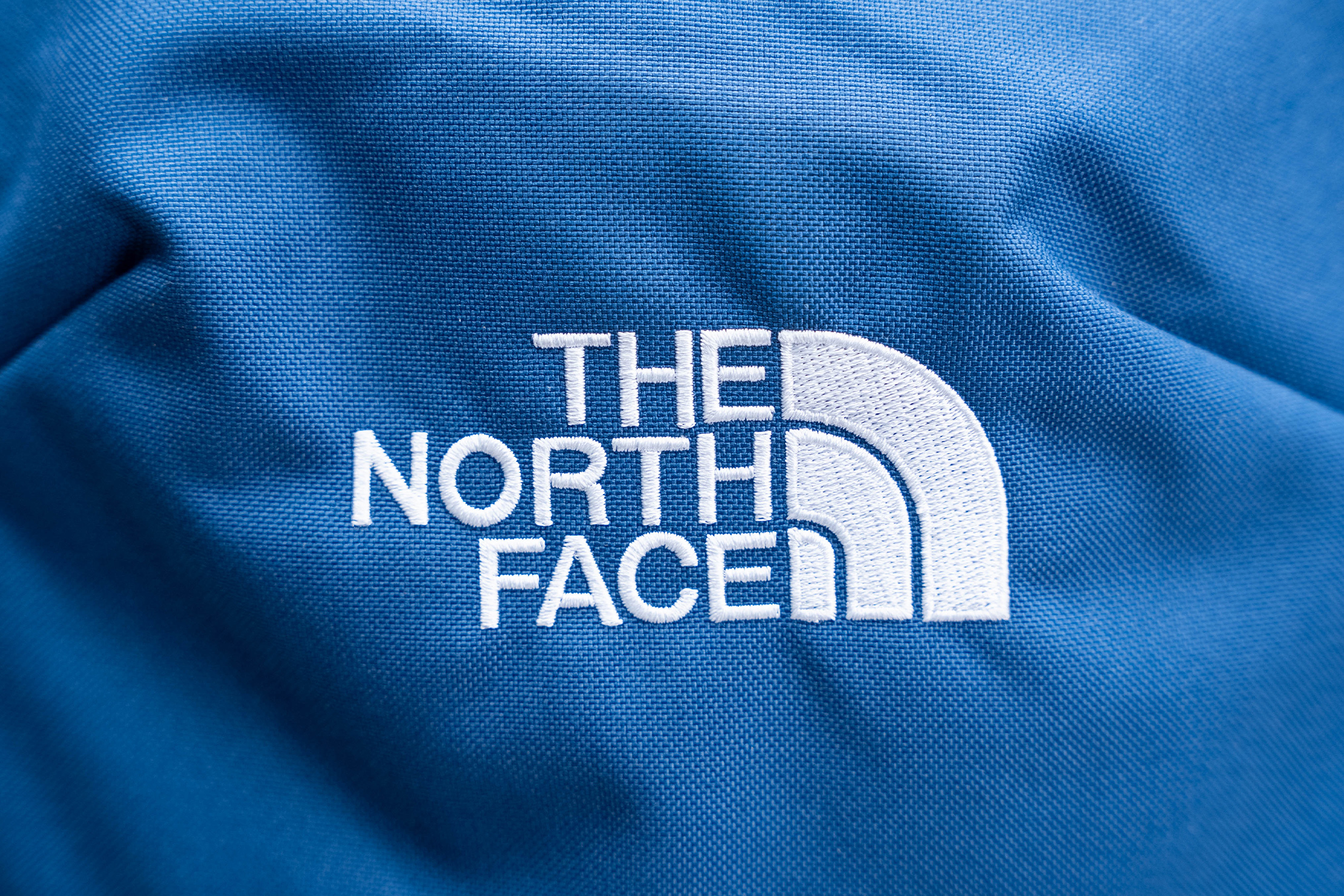
Theoretically, you can hang up six accessories, possibly more, if you feel like stuffing each loop with more than one item. That said, the loops reflect the Vault’s value build quality. To be blunt, they feel loose, thin, and not very robust. We’re happy to have them and the functionality they bring, but the limits are also duly noted.
They didn’t go too crazy by adding different colored trims or fabric. For the most part, the 600-denier recycled polyester dominates the exterior. However, the base has a noticeably heavier weave, which makes it more abrasion-resistant.
The water bottle pockets are in the same boat. There are two of them, one on each side, and they fit 21-ounce-sized travel bottles just fine. The problem is the stretchy mesh material they’re using, which, like the loops, is quite loose. As a result, the pockets can’t hold bottles in place, letting them slip out whenever the Vault’s tilted on its back. Usually, we’d fix this by attaching the bottle’s handle (if it has one) to a nearby loop or D-ring. Unfortunately, the Vault’s bottle pockets don’t have any, nor are the front loops close enough.
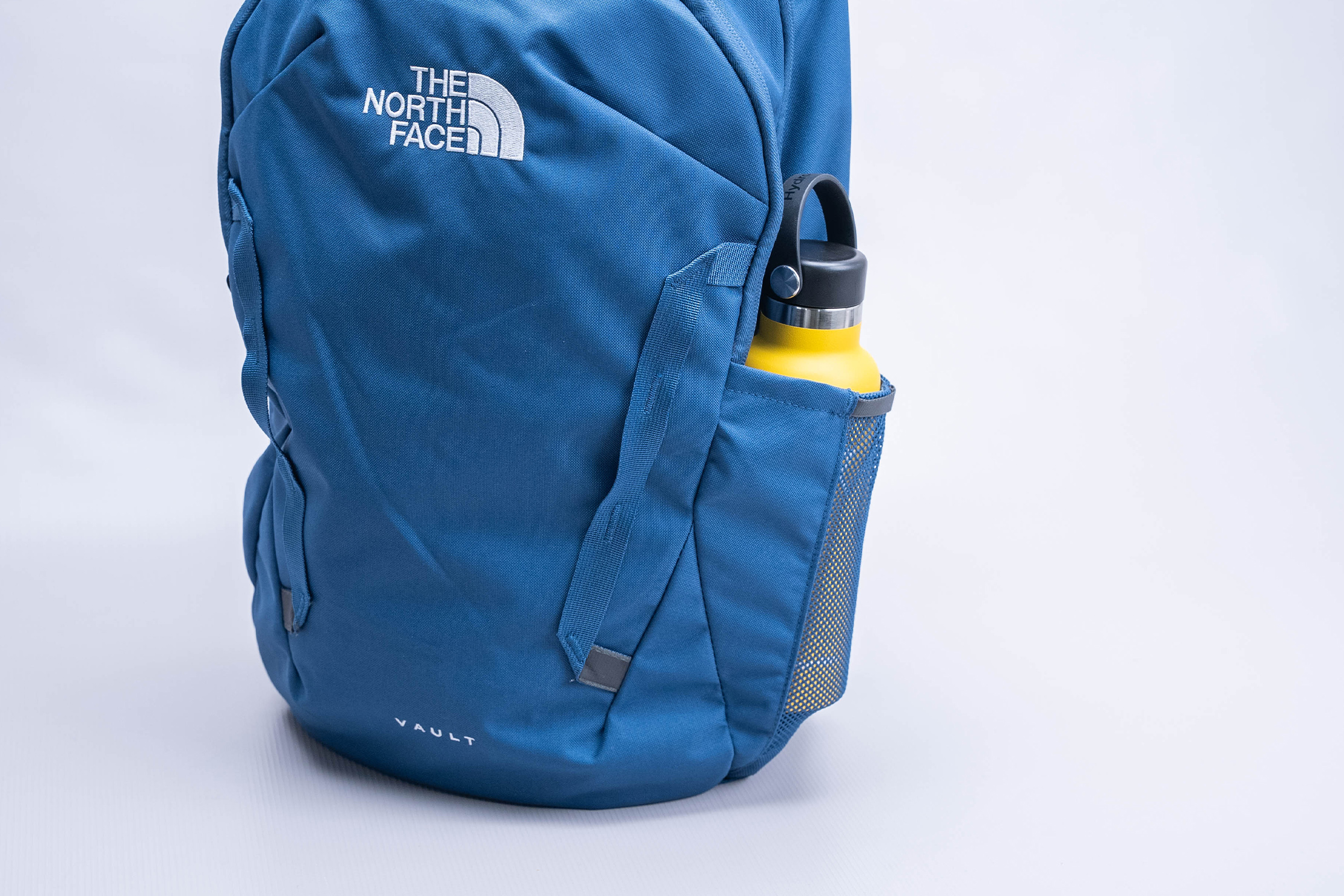
It’s worth noting that the Jester has similarly loose bottle pockets, so this issue isn’t necessarily exclusive to the Vault. We’d just be remiss if we didn’t point it out for those who like to bring their own bottles with them (you totally should, by the way).
The zippers on the Vault are from SBS. Out of all the zipper brands, we’ve encountered the most problems with SBS, from opening too easily to simply breaking. The silver lining for the Vault’s SBS zippers is it’s only the former issue affecting it and not the latter. So what exactly do we mean by “opening easily”? Isn’t that a good thing? Well, yes and no.

Yes, because zippers that are easy to move up and down their track let you access your gear faster. And no, because, in the Vault’s case, if you leave even a slight gap between two zippers, they can drift apart slowly over time. This is also an issue with the SBS-equipped Jester, by the way.
Up at the top is a pair of grab handles. To be honest, we’re not totally convinced that a 27-liter backpack needs two handles. In fact, it’s more the norm to see even 30-plus-liter backpacks with just one thickly-padded handle per side. That said, we like the balance carry having two handles provides, so we won’t harp on it too much.

The harness system on the Vault is particularly interesting to us since it’s very close to what you’d get from The North Face’s more pricey offerings. No—you won’t find load lifters, vertically adjustable shoulder straps, or even a hip belt. However, you do get very thick padding on the back panel and the shoulder straps. The North Face keeps its FlexVent branding here, which should indicate the faith they’re putting behind this simple but robust setup. Still, we can see where they went the budget route with the straps.
The sternum strap mounts to a rail system. This is good because it lets the user have very granular height adjustment for the sternum strap. However, the Vault’s sternum strap is loosely attached to its rail, shifting very easily once there’s no tension to hold it in place. The Jester has the same issue, though, so take note of that.
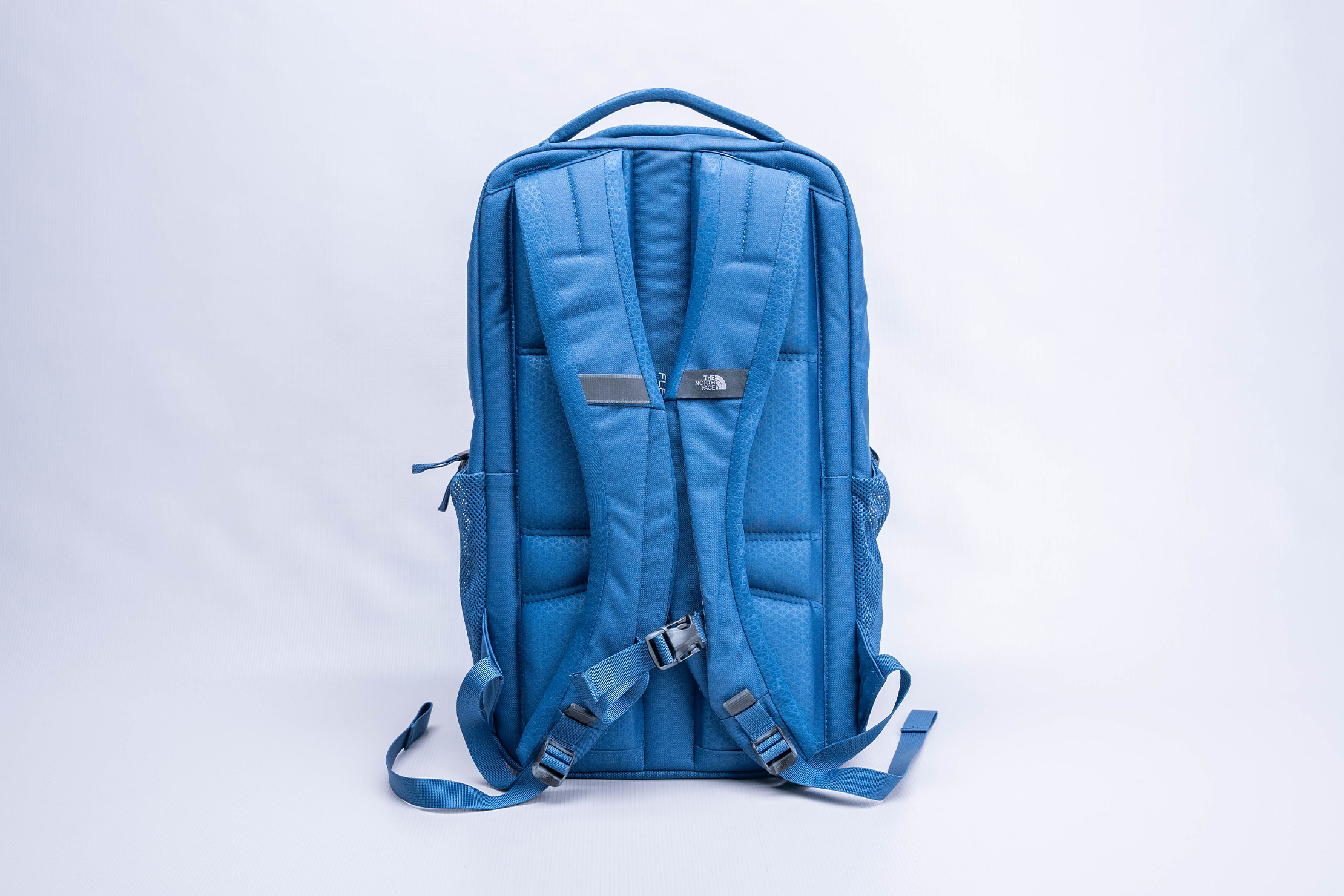
The Woojin side-release buckle works as intended, although it has a slightly different mechanism from the ones we usually see. Typical side-release buckles have the retention clips exposed once they’re locked in. This one, though, has plastic tabs on the female side that cover the retention clips. It still functions like regular side-release buckles; we just found this detail interesting.
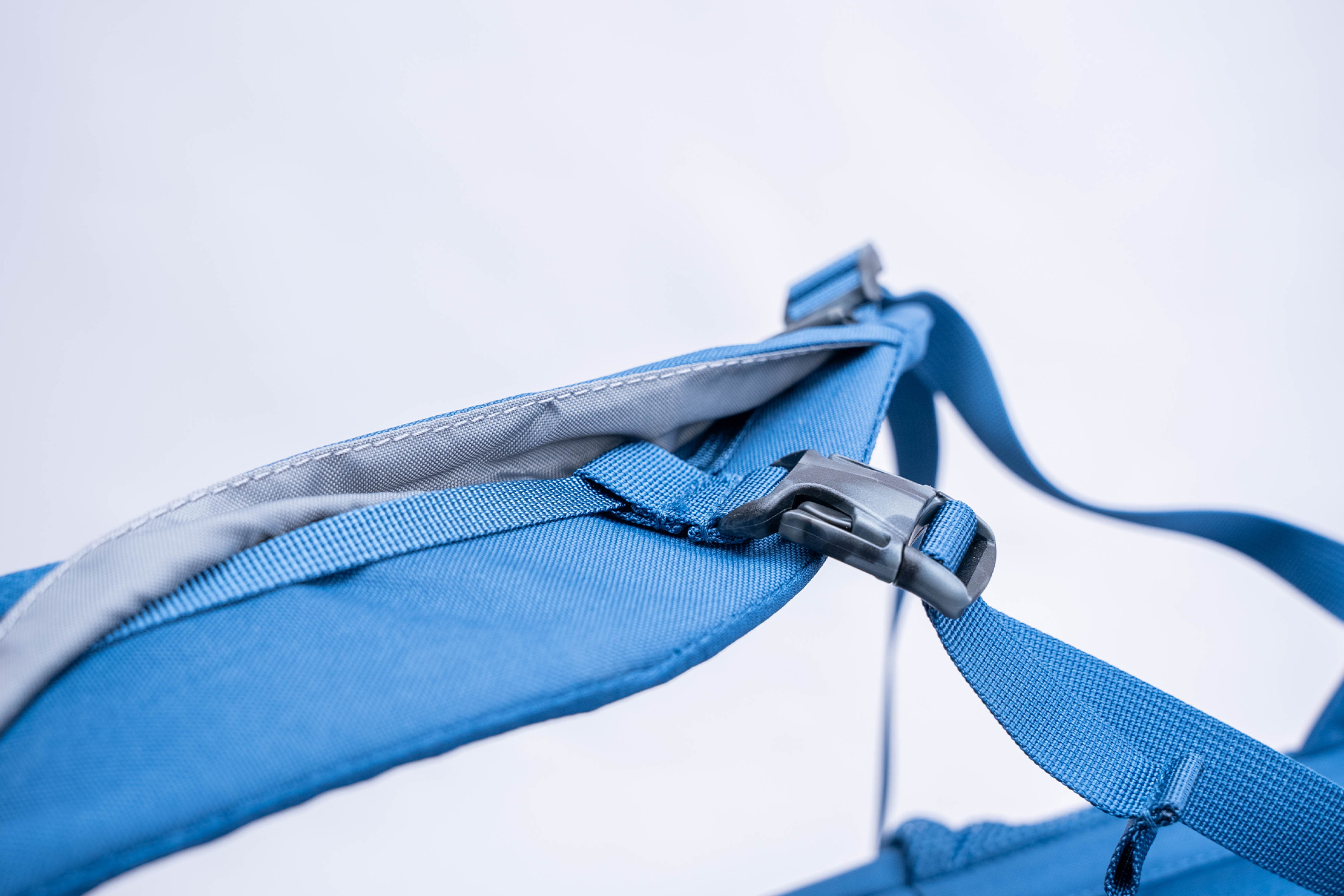
There’s also a loop on each shoulder strap where you can hang an accessory. We like to use loops like these to hang tiny accessories like a bottle of hand sanitizer or a key organizer. That said, we would’ve preferred to have strap keepers for the slack at the bottom, but we won’t dwell on that too much, considering the Recon and Jester don’t have them either.
Fit Notes

So far, we’ve mentioned a lot of praises for the Vault’s harness system. With all that said, the carry feels a bit saggy and low-hanging, even once we’ve tightened the adjustment. It isn’t a deal-breaker, though, as the fit and the way the Vault carries is still comfortable for an everyday backpack.
Barring carrying it all day with a packed-to-the-brim interior, the Vault is easy to bring around. The relatively thick amount of padding on both the shoulder straps and back panel works its magic to cushion the weight as much as possible. And that loose sternum strap? While you have to reorient it each time you put the Vault on, the good news is that the sternum strap won’t shift on its own once you’re wearing the Vault and there’s tension on it.
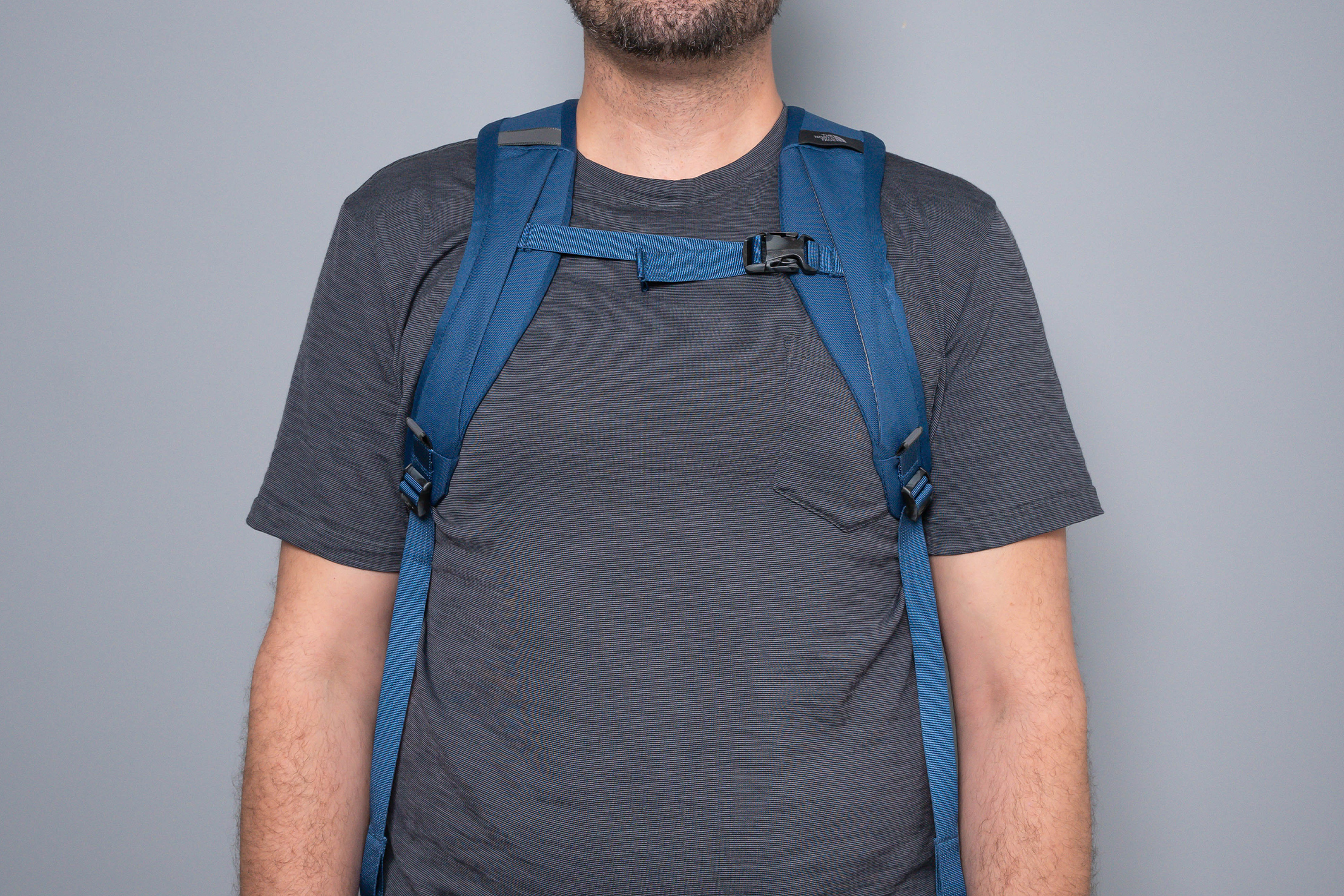
Overall, The North Face largely preserved the comfort we’re used to seeing with their other backpacks. They could’ve cut back more than they have given its budget-focused price, but we’re glad they didn’t.
Inside The Backpack
The first compartment of the Vault is the admin panel, accessible via a horseshoe-style opening. This compartment handles all of the Vault’s secondary storage functions. For example, if you need to put your power bank in a quick and accessible place, it goes here. Two mesh pockets flank two pen pockets in the middle for additional organization. Smaller accessories like dongles and adapters can go in the zippered pocket just behind the mesh ones.
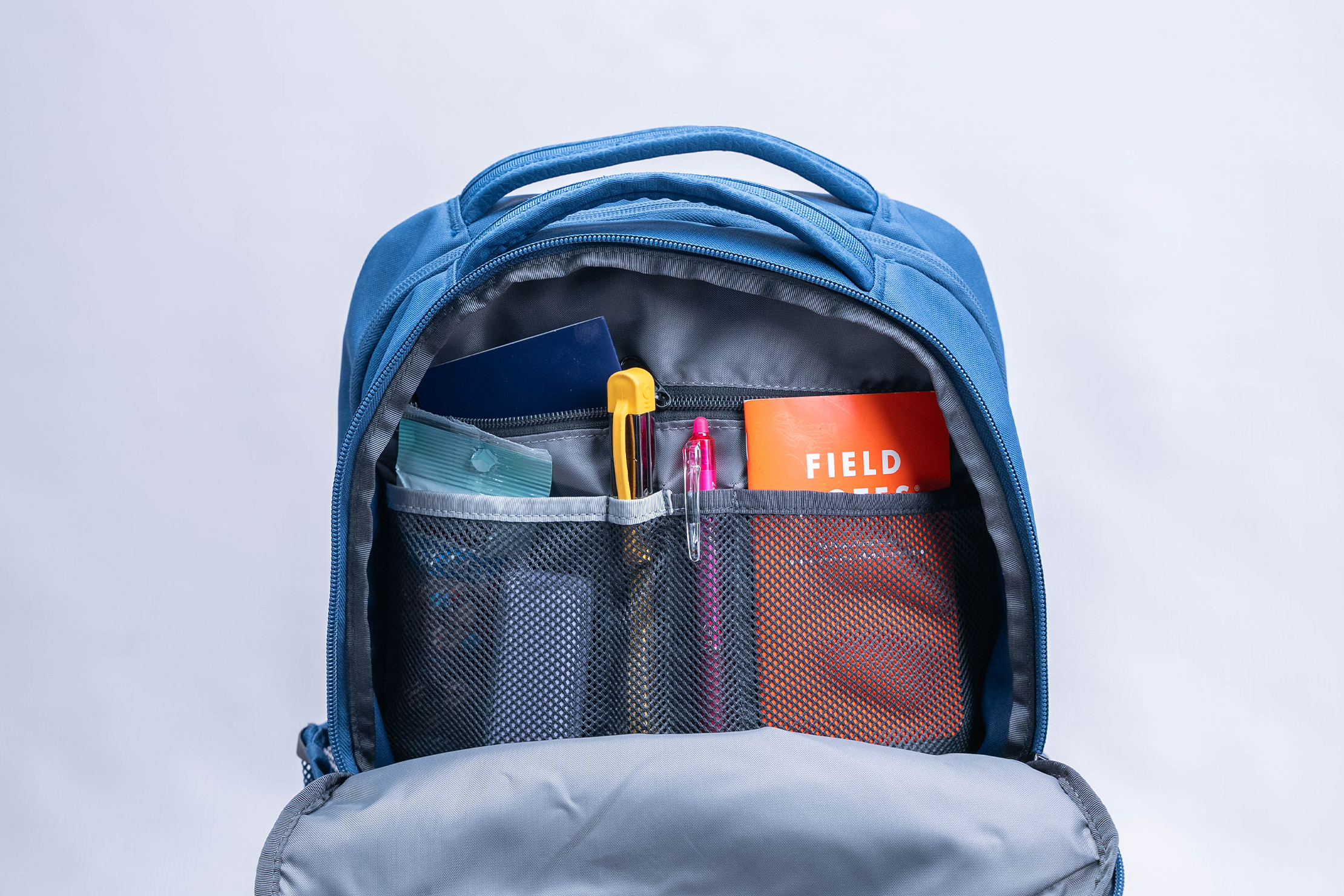
Here comes the con: it’s very evident where The North Face cut back here. Namely, the liner, which is very thin and ever-so-slightly translucent if you look closely enough under the right lighting conditions. The mesh is also loose, and it’s not a very premium-feeling interior overall. However, the ample amount of space is commendable, so you can at least fit a tech pouch alongside your other accessories.
We’ve already mentioned how relatively easy it is to open the SBS zippers. With that in mind, we prefer keeping both of the main compartment’s zippers to one side (they’re unlikely to shift up, after all). Now, this does put them near the water bottle pockets where they can potentially get obscured. Fortunately, we carry only one bottle most of the time, so we just put the zippers to the side where there isn’t one.
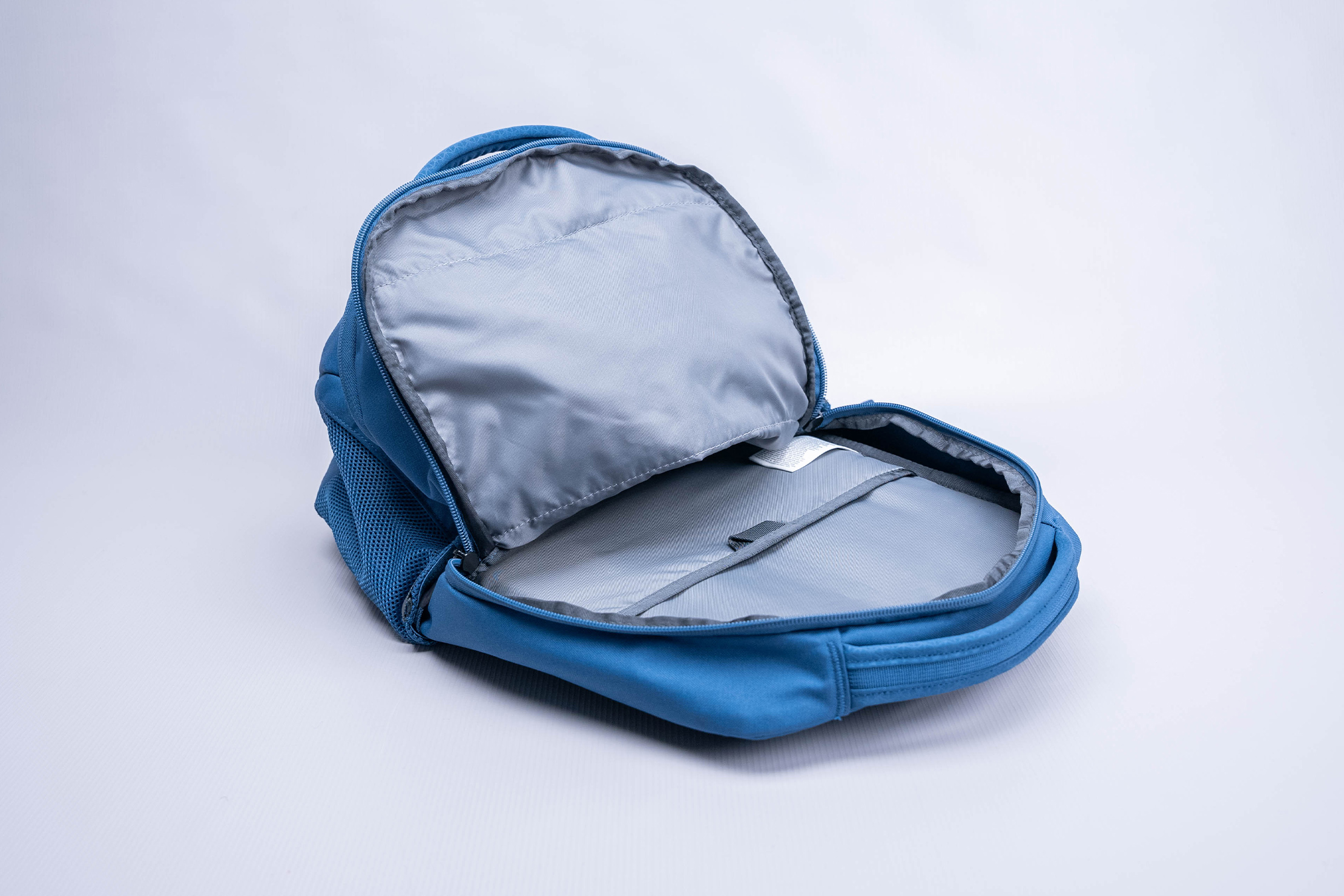
Access to the main compartment, like the admin panel, is via a horseshoe-style opening. It’s appropriate for a daypack like this, which need not open too widely like a clamshell-style travel backpack. It’s enough to get a few packing cubes inside without a fuss, including a 16-inch MacBook Pro, since there’s a sleeve for it at the back (with a false bottom, too).
So far, so standard, so what’s the catch? Remember how we mentioned that the admin panel area’s rather spacious? Well, the main compartment feels relatively tight, so we know where that extra space comes from. It’s not really a huge deal since you can still fit the packing cubes you need. However, the more you pack inside, the harder it is to take a 16-inch MacBook Pro out from the sleeve, so keep that in mind.
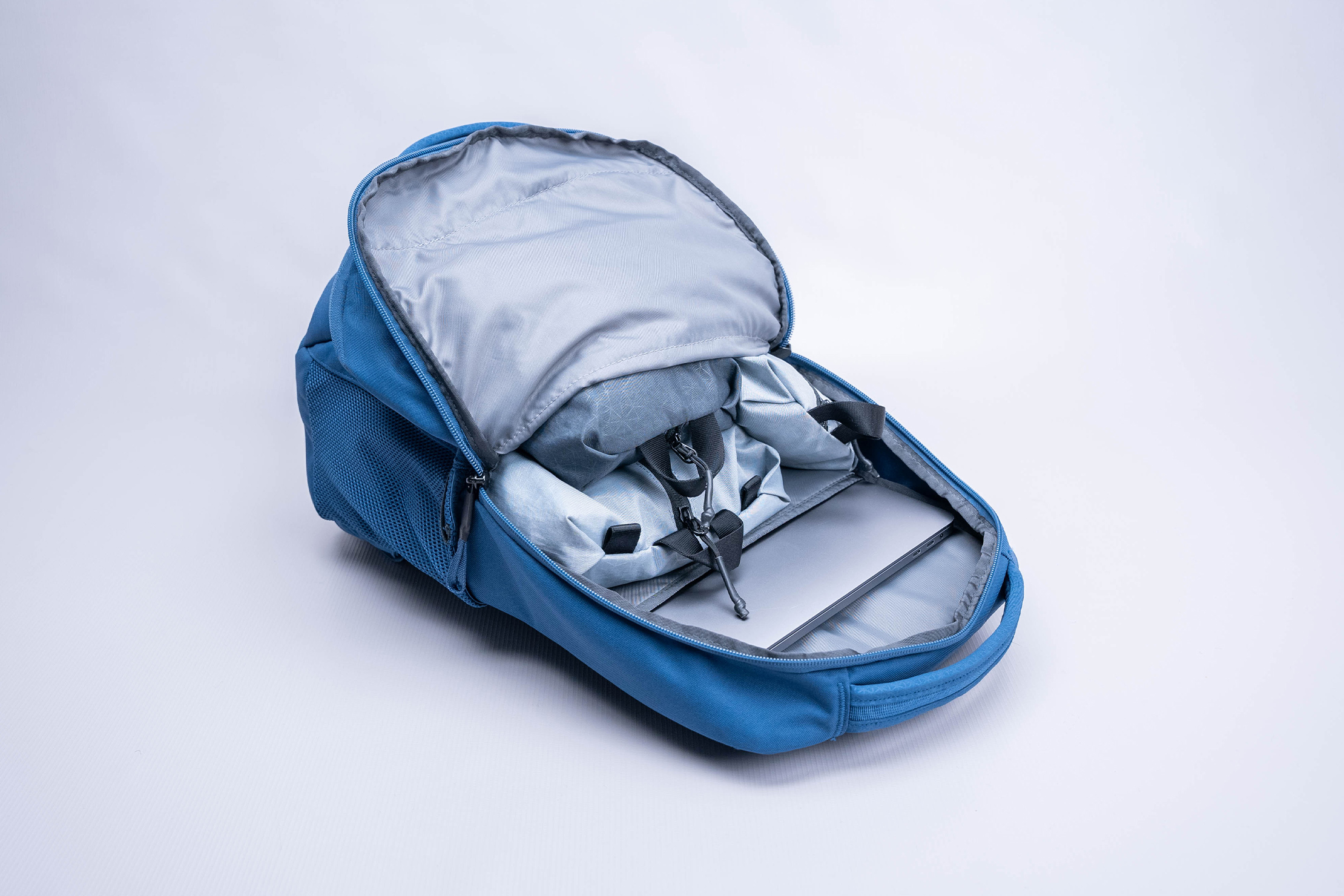
All in all, we dig that The North Face was able to keep key features we like in a backpack within a constrained price point. Admin panel? Check. Well-padded and comfy harness system? Check. Water bottle pockets? Check. Dual top handles? Maybe a bit overkill, but yeah—check. Zoomed out, these are amenities we’ve found on pricier daypacks.

Still, the downsides are hard to ignore. It’s mainly the quality that’s taking the hit, and it’s, understandably, where a lot of users draw the line. In fact, we think that The North Face could have done better in terms of quality, even at this price point. Alternatively, you can find backpacks with better material quality within this price range if you hunt for sales and deals. Be warned, though; you’ll likely find compromises in other areas.
Usage Timeline
Condition: Excellent
- Quality feels so-so so far—it’s similar to the Jester in that the SBS zippers unzip really easily and the liner feels a tad cheap—great price though
- Digging the position of the daisy chain to hang items on the outside
- Organization looks nice & simple without being over the top
Condition: Excellent
- Bag held up nicely for 3 weeks, though the cheap material is still apparent
- Carry proved to be a little saggy when filled up, but the harness system isn’t bad
- The gist of this bag is you’re really buying the brand name—you can pick up a bag for the same price with higher-quality material, or spend a little more for a higher-quality North Face bag










Get your questions about the The North Face Vault Backpack answered from our team and the Pro Community right here on the page. Plus, join discussions with other members about gear, guides, and more.
Join Pack Hacker Pro or, Sign In